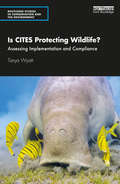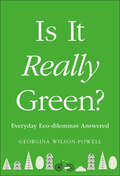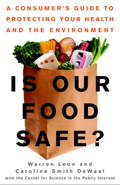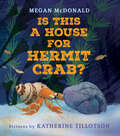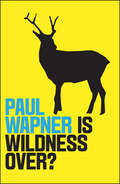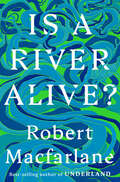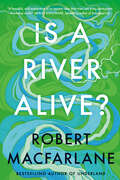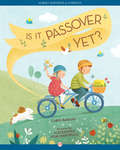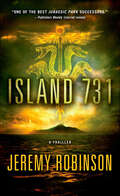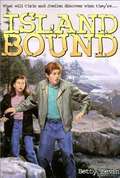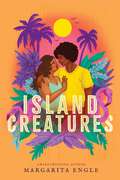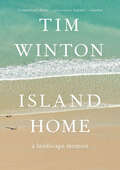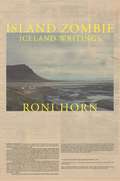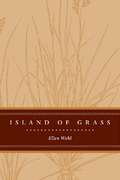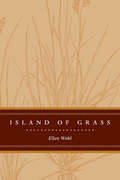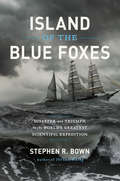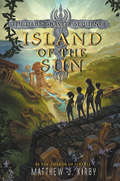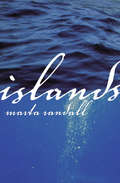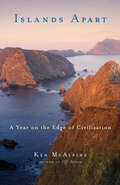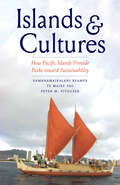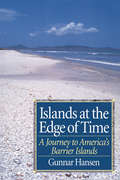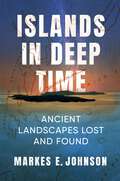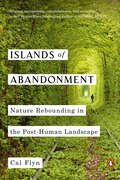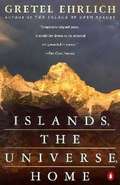- Table View
- List View
Is CITES Protecting Wildlife?: Assessing Implementation and Compliance (Routledge Studies in Conservation and the Environment)
by Tanya WyattThis book assesses the Convention on International Trade in Endangered Species of Wild Fauna and Flora (CITES), examining both implementation and compliance. Humans are causing a biodiversity crisis, where 1 million species are facing extinction. Species are dying, in no small part, because they are overexploited, poached and trafficked and CITES is the main international instrument designed to protect traded wildlife. Does the state of the world’s species mean CITES is failing? This book explores the implementation of and compliance with CITES by all 183 member countries. It is imperative we know the nature and extent of the implementation of and compliance with CITES legislation in all parties to fully understand the impact of legal and illegal trade on species survival. Through extensive legislative content analysis, a Delphi iterative survey, and semi-structured interviews, this is the first book to share empirical research about CITES implementation and compliance. This book contains a comprehensive analysis of the state of CITES, what is done well, what could be done better, and what the future might bring to try to curtail the slide of the world’s wildlife into extinction. By identifying lessons learned in relation to CITES legislation, implementation and compliance this book provides hard evidence to member countries as to how their own practice can be improved. This timely book will be essential reading for students and academics interested in wildlife law, trade and trafficking, green criminology and biodiversity conservation more broadly. It will also be of interest to professionals working in wildlife law enforcement.
Is It Really Green?: Everyday Eco Dilemmas Answered
by Georgina Wilson-PowellFind clarity on everyday green-living dilemmas to maximize your sustainabilityAre paper bags always more environmentally friendly than plastic? How much better for the planet are electric cars? What saves more water - using the dishwasher or washing up by hand?We all want to do the right thing for the planet, but with so many factors at play, it can be difficult to work out which is the greenest way. With answers to more than 140 everyday green-living questions, Is It Really Green? cuts through the confusion and gives you the facts.Get to the heart of each eco-conundrum, interrogate your instincts, and make informed decisions to reduce your ecological footprint.
Is Our Food Safe? A Consumer's Guide to Protecting Your Health and the Environment
by Warren Leon Caroline Smith DewaalEvery day, new warnings emerge about the safety of the food in our markets, school cafeterias, and restaurants. As industry and government officials rush in with reassurances--and food alarmists call for drastic changes in the American diet--ordinary consumers are caught in the middle. Is Our Food Safe?separates the facts from the rumors and offers straightforward, reliable advice on how to protect your health and the environment without going to extremes. Is Our Food Safe?answers common questions about the safety of meat, dairy products, fish, fruits, and other foods that make up our daily diet. It assesses the positive and negative aspects of genetically engineered foods, compares organic and conventionally produced foods, and makes recommendations about when (and if) you should choose local suppliers over industry giants. It also explains which foods to eat and which to avoid if you are concerned about clean water and air and a safe environment. Finally, it provides valuable information on how you can improve the quality of the food available in your communities, including specific issues to raise with grocers and food service providers.
Is Science Enough?: Forty Critical Questions About Climate Justice (Myths Made in America)
by Aviva ChomskyWhy social, racial, and economic justice is just as crucial as science in determining how humans can reverse climate catastrophe.We are facing a climate catastrophe. A plethora of studies describe the damage we&’ve already done, the droughts, the wildfires, the super-storms, the melting glaciers, the heat waves, and the displaced people fleeing lands that are becoming uninhabitable. Many people understand that we are facing a climate emergency, but may be fuzzy on technical, policy, and social justice aspects. In Is Science Enough?, Aviva Chomsky breaks down the concepts, terminology, and debates for activists, students, and anyone concerned about climate change. She argues that science is not enough to change course: we need put social, racial, and economic justice front and center and overhaul the global growth economy.Chomsky&’s accessible primer focuses on 5 key issues:1) Technical questions: What exactly are &“clean,&” &“renewable,&” and &“zero-emission&” energy sources? How much do different sectors (power generation, transportation, agriculture, industry, etc.) contribute to climate change? Can forests serve as a carbon sink?2) Policy questions: What is the Green New Deal? How does a cap-and-trade system work? How does the United States subsidize the fossil fuel industry?3) What can I do as an individual?: Do we need to consume less? What kinds of individual actions can make the most difference? Should we all be vegetarians?4) Social, racial, and economic justice: What&’s the relationship of inequality to climate change? What do race and racism have to do with climate change? How are pandemics related to climate change?5) Broadening the lens: What is economic growth? How important is it, and how does it affect the environment? What is degrowth?
Is This a House for Hermit Crab?
by Megan McDonaldFollow a hermit crab on the perilous journey to replace his outgrown shell in this classic picture book by the author of the popular Judy Moody and Stink series.Hermit Crab has outgrown his shell, and it&’s time for a new home to keep him safe from predators. The beach is strewn with possible choices, but none are quite right. A rock is too heavy; a tin can is too noisy; a fishing net has too many holes. He stepped along the shore,by the sea, in the sand . . .scritch-scratch, scritch-scratchWhen a giant wave sends Hermit Crab careening toward a hungry porcupine fish, will he find a hiding place in time? Katherine Tillotson&’s immersive artwork breathes new life into this classic text by Megan McDonald, beloved author of the Judy Moody series. Brand-new backmatter provides further learning about all things hermit crab.A Junior Library Guild Gold Standard Selection
Is Wildness Over? (Where Am I?)
by Paul WapnerWildness was once integral to our ancestor’s lives as they struggled to survive in an unpredictable environment. Today, most of us live in relative stability insulated from the vicissitudes of nature. Wildness is over, right? Wrong, argues leading environmental scholar Paul Wapner. Wildness may have disappeared from our immediate lives, but it’s been catapulted up to the global level. The planet itself has gone into spasm - calving glaciers, wildfires, heatwaves, mass extinction, and rising oceans all represent the new face of wildness. Rejecting paths offered by geoengineering and de-extinction to bring the Earth under control, Wapner calls instead for ‘rewilding’. This involves relinquishing the desire for comfort at all costs and welcoming greater uncertainty into our own lives. To save ourselves from global ruin, it is time to stop sanitizing and exerting mastery over the world and begin living humbly in it.
Is a River Alive?
by Robert MacfarlaneA #1 Sunday Times (UK) Bestseller • A New York Times "New Nonfiction to Read This Spring" Recommendation • A Guardian "Nonfiction to Look Forward To in 2025" Pick • A Washington Post "Book to Watch For" in 2025 • A Financial Times "What to Read in 2025" Selection • A Goodreads Most Anticipated Book of 2025 <P> From the best-selling author of Underland and "the great nature writer…of this generation" (Wall Street Journal), a revelatory book that transforms how we imagine rivers—and life itself. <P> Hailed in the New York Times as “a naturalist who can unfurl a sentence with the breathless ease of a master angler,” Robert Macfarlane brings his glittering style to a profound work of travel writing, reportage, and natural history. Is a River Alive? is a joyful, mind-expanding exploration of an ancient, urgent idea: that rivers are living beings who should be recognized as such in imagination and law. <P> Macfarlane takes readers on three unforgettable journeys teeming with extraordinary people, stories, and places: to the miraculous cloud-forests and mountain streams of Ecuador, to the wounded creeks and lagoons of India, and to the spectacular wild rivers of Canada—imperiled respectively by mining, pollution, and dams. Braiding these journeys is the life story of the fragile chalk stream a mile from Macfarlane’s house, a stream who flows through his own years and days. <P> Powered by dazzling prose and lit throughout by other minds and voices, Is a River Alive? will open hearts, challenge perspectives, and remind us that our fate flows with that of rivers—and always has. <b>New York Times Bestseller</b>
Is a River Alive?
by Robert MacfarlaneFrom the celebrated writer, observer and naturalist Robert Macfarlane comes a brilliant, perspective-shifting new book, which answers a resounding "yes" to the question of its title.At the heart of Is a River Alive? is a single, transformative idea: that rivers are not mere matter for human use, but living beings, who should be recognized as such in both imagination and law. Macfarlane takes the reader on a mind-expanding global journey into the history, futures, people and places of the ancient, urgent concept.Around the world, rivers are dying from pollution, drought and damming. But a powerful movement is also underway to recognize the lives and the rights of rivers, and to re-animate our relationships with these vast, mysterious presences whose landscapes we share. The young "rights of nature" movement has lit up activists, artists, law-makers and politicians across six continents—and become the focus for revolutionary thinking about rivers in particular.The book flows like water, from the mountains to the sea, over three major journeys. The first is to northern Ecuador, where a miraculous cloud-forest and its rivers are threatened with destruction by Canadian gold-mining. The second is to the wounded rivers, creeks and lagoons of southern India, where a desperate battle to save the lives of these waterbodies is underway. The third is to northeastern Quebec, where a spectacular wild river—the Mutehekau or Magpie—is being defended from death by damming in a river-rights campaign led by an extraordinary Innu poet and leader called Rita Mestokosho.Is A River Alive? is at once a literary work of art, a rallying cry and a catalyst for change. It is a book that will open hearts, spark debates and challenge perspectives. A clarion call to re-centre rivers in our stories, law and politics, it invites us to radically re-imagine not only rivers but life itself. At the heart of this vital, beautiful book is the recognition that our fate flows with that of rivers—and always has.
Is it Passover Yet?
by Alessandra Psacharopulo Chris BarashIt's time to clean the house, set out our best dishes, and fill our homes with food and family to celebrate the joyous holiday of Passover! In this sweet story, join one family as they gather with loved ones to share the joy of togetherness and freedom that Passover brings. This is a fixed-format ebook, which preserves the design and layout of the original print book.
Island 731: A Thriller
by Jeremy RobinsonA research vessel’s crew is shipwrecked on a mysterious island with a deadly past in this terrifying thriller by a New York Times–bestselling author.Mark Hawkins, former park ranger and expert tracker, is on board a research vessel studying the Great Pacific Garbage Patch. But his work is interrupted when his ship is plagued by malfunctions and the crew is battered by a raging storm . . .The next morning, the beaten crew awakens to find themselves anchored in the protective cove of a tropical island—and no one knows how they got there. The ship has been sabotaged, two crewmen are dead, and a third is missing. Hawkins spots signs of the missing man on shore and leads a small team to bring him back. But they soon discover evidence of a brutal history left behind by the island’s former occupants: Unit 731, Japan’s ruthless World War II human experimentation program. As more of his colleagues start to disappear, Hawkins begins to realize the horrible truth: that Island 731 was never decommissioned and the person taking his crewmates may not be a person at all—not anymore . . .“Robinson puts his distinctive mark on Michael Crichton territory with this terrifying present-day riff on The Island of Dr. Moreau . . . One of the best Jurassic Park successors.” —Publishers Weekly (starred review)
Island Bound
by Betty LevinChris Fossett can't resist a dare to spend a week alone on rocky, isolated Fowlers Island off the coast of Maine. He expects to spend his time hunting for food--not ghosts. But there's no denying an eerie presence in the fog, and Chris recalls his grandfather's tales of a girl who was left behind on the island. A fierce girl...who may still be there. Joellen Roth, who comes to the island's bird cliffs with her scientist father and his new girlfriend, wants nothing to do with Chris--nor he with her. But when the two stumble upon a hidden journal, the pages reveal a story strikingly similar to one that Joellen is writing.
Island Creatures
by Margarita EngleFrom award-winning author Margarita Engle comes an inspiring and luminous love story told in verse about childhood friends, once lost and now reconnected, and their fight to protect endangered animals.Every day, Vida reads to the creatures at the wildlife rescue center and dreams of her childhood in Cuba, where she and her best friend Adán adventured through the island rescuing animals from harm. Unbeknownst to her, Adán has also moved to Florida and is feeling trapped in his new home, buffeted by the stormy fights between his abuelo and papi. When a chance encounter with a captive fox leads to their reunion, Vida and Adán are able to find refuge from the cruelty that surrounds them in their soaring, rekindled romance. Their love reaches new heights as they work together at the zoo that rescues rare species, but soon they realize that this peace is only temporary. Much like the wildlife they want to protect, Vida and Adán are caught in a cycle of distrust and heartlessness. As old family grudges and painful memories come to light, can they and their families learn to heal and forgive each other for a brighter, kinder future?
Island Home: A Landscape Memoir
by Tim WintonThe writer explores his beloved Australia in a memoir that is “a delight to read [and] a call to arms . . . It beseeches us to revere the land that sustains us” (Guardian).From boyhood, Tim Winton’s relationship with the world around him?rock pools, sea caves, scrub, and swamp?has been as vital as any other connection. Camping in hidden inlets, walking in high rocky desert, diving in reefs, bobbing in the sea between surfing sets, Winton has felt the place seep into him, and learned to see landscape as a living process. In Island Home, Winton brings this landscape?and its influence on the island nation’s identity and art?vividly to life through personal accounts and environmental history.Wise, rhapsodic, exalted?in language as unexpected and wild as the landscape it describes?Island Home is a brilliant, moving portrait of Australia from one of its finest writers, the prize-winning author of Breath, Eyrie, and The Shepherd’s Hut, among other acclaimed titles.
Island Zombie: Iceland Writings
by Roni HornAn evocative chronicle of the power of solitude in the natural worldI’m often asked, but have no idea why I chose Iceland, why I first started going, why I still go. In truth I believe Iceland chose me.—from the introductionContemporary artist Roni Horn first visited Iceland in 1975 at the age of nineteen, and since then, the island’s treeless expanse has had an enduring hold on Horn’s creative work. Through a series of remarkable and poetic reflections, vignettes, episodes, and illustrated essays, Island Zombie distills the artist’s lifelong experience of Iceland’s natural environment. Together, these pieces offer an unforgettable exploration of the indefinable and inescapable force of remote, elemental places, and provide a sustained look at how an island and its atmosphere can take possession of the innermost self.Island Zombie is a meditation on being present. It vividly conveys Horn’s experiences, from the deeply profound to the joyful and absurd. Through powerful evocations of the changing weather and other natural phenomena—the violence of the wind, the often aggressive birds, the imposing influence of glaciers, and the ubiquitous presence of water in all its variety—we come to understand the author’s abiding need for Iceland, a place uniquely essential to Horn’s creative and spiritual life. The dramatic surroundings provoke examinations of self-sufficiency and isolation, and these ruminations summon a range of cultural companions, including El Greco, Emily Dickinson, Judy Garland, Wallace Stevens, Edgar Allan Poe, William Morris, and Rachel Carson. While brilliantly portraying nature’s sublime energy, Horn also confronts issues of consumption, destruction, and loss, as the industrial and man-made encroach on Icelandic wilderness.Filled with musings on a secluded region that perpetually encourages a sense of discovery, Island Zombie illuminates a wild and beautiful Iceland that remains essential and new.
Island of Grass
by Ellen E. WohlIsland of Grass tells the story of the Cathy Fromme Prairie Natural Area, a 240-acre preserve surrounded by housing developments in Fort Collins, Colorado. This small grassland is a remnant of the once-vast prairies of the West that early European explorers and settlers described as seas of grass. Agricultural land use and urban expansion during the past two centuries have fragmented and altered these prairies. All that remains today are small islands. These remnants cannot support some of the larger animals that once roamed the prairie, but they continue to support a diverse array of plants and animals and can still teach us much about grassland ecology. Through her examinations of daily changes during walks across the Fromme Prairie over the course of a year, Ellen Wohl explores one of the more neglected ecosystems in North America, describing the geology, soils, climate, ecology, and natural history of the area, as well as providing glimpses into the lives of the plants, animals, and microbes inhabiting this landscape. Although small in size, pieces of preserved shortgrass prairie like the Cathy Fromme Prairie Natural Area are rich, diverse, and accessible natural environments deserving of awareness, appreciation, and protection. Anyone concerned with the ecology and conservation of grasslands in general, the ecology and conservation of open space in urban areas, or the natural history of Colorado will be interested in this book.
Island of Grass
by Ellen E. WohlIsland of Grass tells the story of the Cathy Fromme Prairie Natural Area, a 240-acre preserve surrounded by housing developments in Fort Collins, Colorado. This small grassland is a remnant of the once-vast prairies of the West that early European explorers and settlers described as seas of grass.Agricultural land use and urban expansion during the past two centuries have fragmented and altered these prairies. All that remains today are small islands. These remnants cannot support some of the larger animals that once roamed the prairie, but they continue to support a diverse array of plants and animals and can still teach us much about grassland ecology. Through her examinations of daily changes during walks across the Fromme Prairie over the course of a year, Ellen Wohl explores one of the more neglected ecosystems in North America, describing the geology, soils, climate, ecology, and natural history of the area, as well as providing glimpses into the lives of the plants, animals, and microbes inhabiting this landscape. Although small in size, pieces of preserved shortgrass prairie like the Cathy Fromme Prairie Natural Area are rich, diverse, and accessible natural environments deserving of awareness, appreciation, and protection. Anyone concerned with the ecology and conservation of grasslands in general, the ecology and conservation of open space in urban areas, or the natural history of Colorado will be interested in this book.
Island of the Blue Foxes: Disaster and Triumph on the World's Greatest Scientific Expedition (A Merloyd Lawrence Book)
by Stephen R. BownThe story of the world's largest, longest, and best financed scientific expedition of all time, triumphantly successful, gruesomely tragic, and never before fully told The immense 18th-century scientific journey, variously known as the Second Kamchatka Expedition or the Great Northern Expedition, from St. Petersburg across Siberia to the coast of North America, involved over 3,000 people and cost Peter the Great over one-sixth of his empire's annual revenue. Until now recorded only in academic works, this 10-year venture, led by the legendary Danish captain Vitus Bering and including scientists, artists, mariners, soldiers, and laborers, discovered Alaska, opened the Pacific fur trade, and led to fame, shipwreck, and "one of the most tragic and ghastly trials of suffering in the annals of maritime and arctic history."
Island of the Sun
by Matthew J. KirbyPerfect for fans of the Percy Jackson and Seven Wonders series, Island of the Sun is the second book in an epic, fast-paced middle grade adventure trilogy by acclaimed author Matthew J. Kirby.Eleanor and her friends have shut down the mysterious Concentrator in the Arctic, but their mission is far from over. The earth is still spinning out of its orbit and growing colder by the day. Their only chance is to find the other Concentrators embedded around the world and deactivate them before it's too late.But doing so won't be easy. The Global Energy Trust has branded Eleanor, her mother, and their friends international terrorists and is tracking their every move. The G.E.T. will stop at nothing to harness the power of the Concentrators in order to preserve the select few people its leaders deem worthy, and Eleanor is soon forced to ask herself whether it's worth risking the lives of the entire human race for a slim chance to save it.
Islands
by Marta RandallNebula Award Finalist. She will never be one of them. When the immortality treatments failed, she knew her destiny would not be as glorious and carefree as the immortals. The immortals rebuilt the Earth after the great floods, but she is not one of them, and she doesn't seem fit to live anywhere amongst them. When she finds refuge aboard the ship Ilium and begins ocean floor navigation, an adventure immortals would envy, she discovers a secret place. But she knows if she can unlock the power that the immortals lost on an island buried far beneath the land, the world and the immortals' future will never be the same again.
Islands Apart: A Year on the Edge of Civilization
by Ken McalpineAuthor Ken McAlpine stands in his front yard one night in Ventura, California, trying to see the stars. His view is diminished by light pollution, making it hard to see much of anything in the sky. Our fast-paced, technologically advanced society, he concludes, is not conducive to stargazing or soul-searching. Taking a page from Thoreau's Walden, he decides to get away from the clamor of everyday life, journeying alone through California's Channel Islands National Park. There, he imagines, he might be able to "breathe slowly and think clearly, to examine how we live and what we live for."In between his week-long solo trips through these pristine islands, McAlpine reaches out to try to better understand his fellow man: he eats lunch with the homeless in Beverly Hills, sits in the desert with a 98-year-old Benedictine monk, and befriends a sidewalk celebrity impersonator in Hollywood. What he discovers about himself and the world we live in will inspire anyone who wishes they had the time to slow down and notice the wonders of nature and humanity.To learn more about the author, visit his website at www.kenmcalpine.com.
Islands and Cultures: How Pacific Islands Provide Paths toward Sustainability
by Peter M. Vitousek Kamanamaikalani Beamer Te Maire TauA uniquely collaborative analysis of human adaptation to the Polynesian islands, told through oral histories, biophysical evidence, and historical records Humans began to settle the area we know as Polynesia between 3,000 and 800 years ago, bringing with them material culture, including plants and animals, and ideas about societal organization, and then adapting to the specific biophysical features of the islands they discovered. The authors of this book analyze the formation of their human-environment systems using oral histories, biophysical evidence, and historical records, arguing that the Polynesian islands can serve as useful models for how human societies in general interact with their environments. The islands&’ clearly defined (and relatively isolated) environments, comparatively recent discovery by humans, and innovative and dynamic societies allow for insights not available when studying other cultures. Kamana Beamer, Te Maire Tau, and Peter Vitousek have collaborated with a dozen other scholars, many of them Polynesian, to show how these cultures adapted to novel environments in the past and how we can draw insights for global sustainability today.
Islands at the Edge of Time: A Journey To America's Barrier Islands
by Gunnar HansenIslands at the Edge of Time is the story of one man's captivating journey along America's barrier islands from Boca Chica, Texas, to the Outer Banks of North Carolina. Weaving in and out along the coastlines of Texas, Louisiana, Mississippi, Alabama, South Carolina, and North Carolina, poet and naturalist Gunnar Hansen perceives barrier islands not as sand but as expressions in time of the processes that make them. Along the way he treats the reader to absorbing accounts of those who call these islands home -- their lives often lived in isolation and at the extreme edges of existence -- and examines how the culture and history of these people are shaped by the physical character of their surroundings.
Islands in Deep Time: Ancient Landscapes Lost and Found
by Markes E. JohnsonHilltops surrounded by farmland in southern Wisconsin turn out to be the eroded remnants of an ancient archipelago. An island in the Yellow Sea where Korean tourists flock is the peak of a flooded mountain rising from a drowned continental shelf. From a mountaintop shrine to Genghis Khan in Inner Mongolia, the silhouette of a Silurian seascape can be spotted. On the shores of Hudson Bay, where polar bears patrol the Arctic tundra, a close look unveils what was a tropical coastline encrusted with corals nearly 450 million years ago.The geologist Markes E. Johnson invites readers on a journey through deep time to find the traces of ancient islands. He visits a dozen sites around the globe, looking above and below today’s waterlines to uncover how landscapes of the past are preserved in the present. Going back 500 million years to the Cambrian through the Pleistocene 125,000 years ago, this book reconstructs how “paleoislands” appeared under different climatic conditions and environmental constraints. Finding vestiges of prehistoric ecologies, Johnson emphasizes the complexity of island ecosystems and the importance of preserving these significant sites.Inviting and accessible, this book is a travelogue that takes readers through time as well as space. Islands in Deep Time shares the adventure of exploring striking locations across geologic eras and issues a passionate call for their conservation.
Islands of Abandonment: Nature Rebounding in the Post-Human Landscape
by Cal FlynA beautiful, lyrical exploration of the places where nature is flourishing in our absenceSome of the only truly feral cattle in the world wander a long-abandoned island off the northernmost tip of Scotland. A variety of wildlife not seen in many lifetimes has rebounded on the irradiated grounds of Chernobyl. A lush forest supports thousands of species that are extinct or endangered everywhere else on earth in the Korean peninsula's narrow DMZ.Cal Flyn, an investigative journalist, exceptional nature writer, and promising new literary voice visits the eeriest and most desolate places on Earth that due to war, disaster, disease, or economic decay, have been abandoned by humans. What she finds every time is an "island" of teeming new life: nature has rushed in to fill the void faster and more thoroughly than even the most hopeful projections of scientists.Islands of Abandonment is a tour through these new ecosystems, in all their glory, as sites of unexpected environmental significance, where the natural world has reasserted its wild power and promise. And while it doesn't let us off the hook for addressing environmental degradation and climate change, it is a case that hope is far from lost, and it is ultimately a story of redemption: the most polluted spots on Earth can be rehabilitated through ecological processes and, in fact, they already are.
Islands, the Universe, Home
by Gretel EhrlichA collection of deeply personal essays that illuminate the relationship between the human and the natural worlds by the acclaimed author of "The Solace of Open Spaces".
